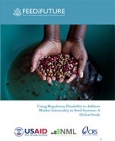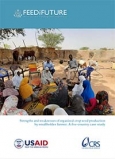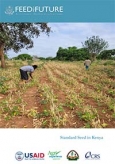Guidelines | January 8, 2024
CRS Resilience Framework
Catholic Relief Services conducts resilience programming that spans many (if not all) key technical areas and sectors, while also engaging at the level of individuals, households, communities, and systems. Doing so requires (1) understanding the consequences of different shocks and stressors, (2) building the individual capacities/assets that people can use to address those risks and interact with systems and structures, (3) supporting the strategies and pathways that are followed in the face of a shock or chronic stress, and (4) enabling outcomes that indicate improved well-being and stability.
This brief provides an overarching conceptual model of how CRS helps reduce risks, facilitates coping, and strengthens systems to produce better resilience and less vulnerability. The model examines the Risk and Vulnerability context – including shocks and stressors – alongside the Resilience Factors that enable assets and capacities to be built and utilized for better well-being outcomes. Resilience Pathways show how resilience is built over time and in response to shocks and stressors, for program evaluation and measurement.
The brief also provides CRS’ global Theory of Change for resilience – which focuses on (1) risk reduction and coping; (2) adaptation to changing conditions; and (3) systems change – and aligns with the absorptive, adaptive, and transformative paradigm used across common resilience frameworks. The Theory of Change also defines the approaches and interventions that lead to resilient individuals, households, communities, and systems.
Overall, this brief is designed to provide an agency-level overview of CRS’ resilience programming, and to have application for business development, project design, implementation, and resilience measurement.





